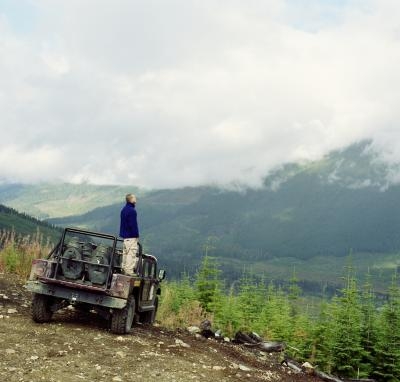
Four-wheel-drive and big tires may go together like peas and carrots, but those big tires can mix about as well with your drivetrain as bleach and ammonia. Anytime you make a major change to any vehicle, it's wise to examine every possible repercussion to the chassis, drivetrain and driver.
Technically speaking, simply lifting a truck by a few inches won't put any additional strain on the transmission. The wheels connect to the axles, which in turn connect to the transmission or transfer case via a driveshaft. The driveshaft has universal joints that can handle a few more degrees of angularity. So, as long as the universal joints don't bind up and stop flexing, or the driveshaft doesn't move so far that it falls out of the transmission, there shouldn't be any repercussions where the transmission is concerned.
In the real world, lifted 4WD trucks break transmissions and transfer cases all the time. However, this has more to do with larger tires and excess driveshaft angularity than simply lifting the truck. Excessively high driveshaft angles can cause the U-joints to bind, lodging the driveshaft's tip in the transmission housing and possibly splitting the housing in two. Very large tires transmit more of the engine's power without slipping, which means that the axles, U-joints or transmission internals may break before the tires can spin. So, the act of lifting a truck won't break the transmission in and of itself, but binding U-joints and big tires might.